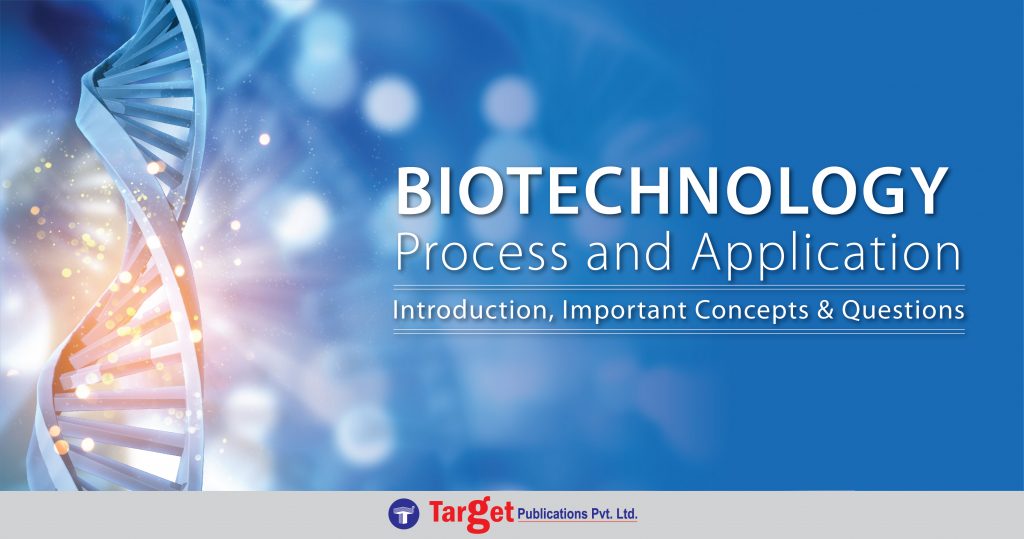BioTechnology - Process and Application | Introduction, Important Concepts & Questions
BioTechnology - Process and Application | Introduction, Important Concepts & Questions

Introduction
Biotechnology simply means the use of microorganisms for the benefit of mankind. Curd-making is the simplest example of biotechnology. Not only baking bread and cheese making but also the ingredients of your favourite Chinese food like vinegar and soy sauce are the products of biotechnology. Also, if it weren't for biotechnology, we would have more sewage on earth than people! All these are nothing but the use of microorganisms bringing about chemical reactions to get the desired results.
Recombinant DNA technology
But, scientists were determined to go beyond what was naturally available. Modern and sophisticated methods have now modified/manipulated the DNA of several microorganisms, a technique that is known as recombinant DNA technology. The desired gene or gene of interest is obtained from the 'donor' and inserted into the 'host' cell which replicates and expresses the protein required. Let's make this simple. We need insulin regularly for diabetes patients. The biotechnologist takes a human cell and isolates the DNA (donor). He cuts out the genes from this DNA with the help of molecular scissors (enzymes). He screens for (selects) the desired gene. In this case, it is the gene for insulin. Now he needs an organism which can multiply at a fast rate. He chooses E. coli and inserts the insulin gene into the plasmid of E. coli. Plasmids are self-replicating circular forms of DNA which are found in bacteria. The bacteria does not depend upon it for survival. But it helps the bacteria to survive and reproduce in adverse conditions. This plasmid is put back into the E.coli which multiplies and expresses the gene (produces insulin hormone). Thus, we get a considerable amount of insulin in a short duration. With the application of this technique, clotting factors for bleeding disorders, hormones and vaccines can be easily made.
Now the question remains, what are these molecular scissors? They are restriction enzymes which can catalyze a cut (break) in the DNA sequence. Each restriction enzyme works for a particular sequence and hence can cut the donor as well as the host DNA at predetermined sites so that our desired gene is removed from the host and fits into the donor exactly like a jigsaw puzzle. The site of the DNA which is cut is usually a palindrome (a sequence that reads the same when strands are oriented in the same way). Restriction enzymes are either exonucleases which can cut only the ends of DNA or endonucleases which cut within the DNA sequence. They are named after the bacteria from which they are isolated.
Transgenic crops
With the demand for food grains increasing, there was a need to produce better-quality crops. Agricultural biotechnology is the solution. The expected result is increased quantity, better quality (nutritional value) and disease resistance. These crops are called transgenic crops as the above-mentioned r- DNA technology is used to insert the desirable genes into the plants. Insect-resistant properties have been obtained from a gene named as 'cry' gene which is obtained from a soil bacteria called Bacillus thuringiensis and inserted into the genome of the plant to give the desirable (insecticidal) properties. In a similar manner, features like nitrogen fixing, longer shelf life, and increased vitamin content can be obtained.
Transposons
In order to manipulate the DNA, there are other methods used. Transposons are DNA sequences that can change their place/ position in the genome. They can be used to insert a gene in the DNA of an organism. Retro transposons can move from DNA to RNA and back to DNA (copy and paste mechanism). DNA transposons can move to the target site within the same DNA, hence changing their position within the genome to achieve the desired result (cut and paste mechanism).
Bacteriophages
Bacteriophages are viruses that infect bacteria. The recombinant DNA is packed (put inside) the bacteriophage. Once it infects the bacteria, this recombinant DNA starts replicating. A lytic cycle follows in which the newly formed virus (many of them) break open the bacteria (host). Clones of the recombinant DNA can be obtained.
DNA library
In order to carry on the work of DNA cloning, it is necessary to collect genes which are required for the recombinant technology. These genes are collected from different species and are stored in what is called a DNA library. We aim at providing concise and precise reference material to ease the study process. Target Publications Biology Notes for Std. 12th is curated with utmost care in accordance with the latest syllabus for 12th board examinations. The books are offered in individual and Perfect Series. Also, there are individual subject-wise course materials for Chemistry, Physics and Mathematics well. Grab your copy now and subscribe to the test series for acing the 12th board with ease.




